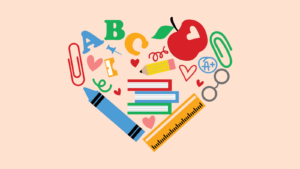By Pola Papadopoulou
In an ideal world, all students in a classroom would have the same abilities when it came to learning, the same behaviour, and the same learning styles. There would be no need for contingency plans and certainly no need to adapt a lesson plan to a variety of styles. However, this is far from being a perfect world and the faster we learn how to teach such mixed ability and multicultural classes, the more students and teachers alike will benefit.
Why is it important to know how to teach mixed ability and multicultural classes?
There are numerous reasons and three of the most undeniable ones springing to mind are: globalization, the brain drain, and the refugee crisis. With physical borders shrinking and with greater access to multiple learning opportunities around the world, educators need to be equipped with the know-how and the soft and hard skills necessary to deal with diversity. Such classes are steadily becoming the norm and while posing a challenge to teachers, the experience is truly rewarding.
The most common challenges facing teachers.
One challenge of teaching a variety of levels in the same classroom is that because of the existing dissonance, some students will most likely feel demotivated and inclined to give up should the lessons be too hard for them to follow. On the other hand, students at a higher level will probably feel uninterested and bored if lessons are too easy. In both situations, teachers are faced with disengaged classrooms and more often than not find themselves confused as to which students they should support.
A tricky situation indeed.
However, there are a couple of things teachers can keep in mind. For instance, why not add some spice to pair and group work? Pairing strong and weak students for more controlled exercises, such as drill and textbook work, can lead to the former assisting the latter with anything they may not understand. Weaker students will follow the stronger students’ lead and will try to perform in a similar way. The teacher’s role in this case, apart from being familiar with the strengths and weaknesses of their students, is to encourage teamwork and check for any patronizing behaviour on the part of the stronger student or any inactivity on the part of the weaker.
Likewise, pairing two strong students together or two weak ones for freer activities also has its benefits.
As such activities are considered to be more creative and allow students more freedom to express themselves, such pairings would leave no students feeling looked down upon.
The topic may be the same for all students, but the prompts can change, so that all students contribute equally to the conversation. Allow higher-level students to discuss more aspects of a topic and in more detail and weaker students the more basic perspectives on a topic. Both sides contribute and the teacher is able to monitor and mark each student’s progress based on their abilities under equal circumstances.
Additionally, teachers may want to consider compiling extra material for their students, as not everyone is able to finish their work at the same time. Some students need more and others less time to complete classroom work. Therefore, instead of having the students twiddling their thumbs or being glued to their phones, teachers could provide them with more exercises or with prompts on current issues, which the class will later discuss. Of course, students are most likely to complain if they receive more work, therefore teachers should be prepared to justify that.
Praise students and explain to them that they will be one step ahead with their work.
If you can give students extra marks for that, be sure to mention it. And don’t forget, extra material can go both ways. Weaker students who are having difficulties completing their exercises can be given another chance to do so with less challenging material on the same topic.
Multiculturalism applies to lives outside of the classroom.
Although mixed ability classes present very obvious challenges for teachers, the matter of multiculturalism is more delicate, as it applies to the real lives of the students outside the classroom. More often than not, difference in cultures translates into differences between students, which may lead to misunderstandings.
When there is no understanding of each other’s cultures, what could be a fun and entertaining hour can quickly turn into a pit of offenses and insults usually originating from insignificant utterances.
Creating a harmonious atmosphere
A classroom in a confined space, where teachers and students need to collaborate in a harmonious way. It is the role of the teacher to make sure that such an atmosphere is created and maintained. There are, of course many ways to do this but one of the ways I find very useful and effective is to get students to present something of their culture, which they are proud of. It could be anything from a recipe or a traditional dance to a saying or custom. In situations like this, the teacher is not simply monitoring but is also facilitating the process.
They should encourage the student presenting to give as many details and as many reasons as possible as to why they chose to present that particular concept.
This way, teachers and students alike can grasp the concept in its entirety from an insider’s point of view.
Moreover, the teacher should also make sure that the rest of the students try to embrace the ‘other,’ they should be encouraged to ask questions and show interest. Their turn will come to present something dear to them as well. I find that this method really promotes mutual understanding.
Dealing with mixed ability and multicultural classes is difficult, but not impossible.
It may take more time and effort but if students feel accepted and included, they will feel more inclined to learn and the results will definitely be more positive.




